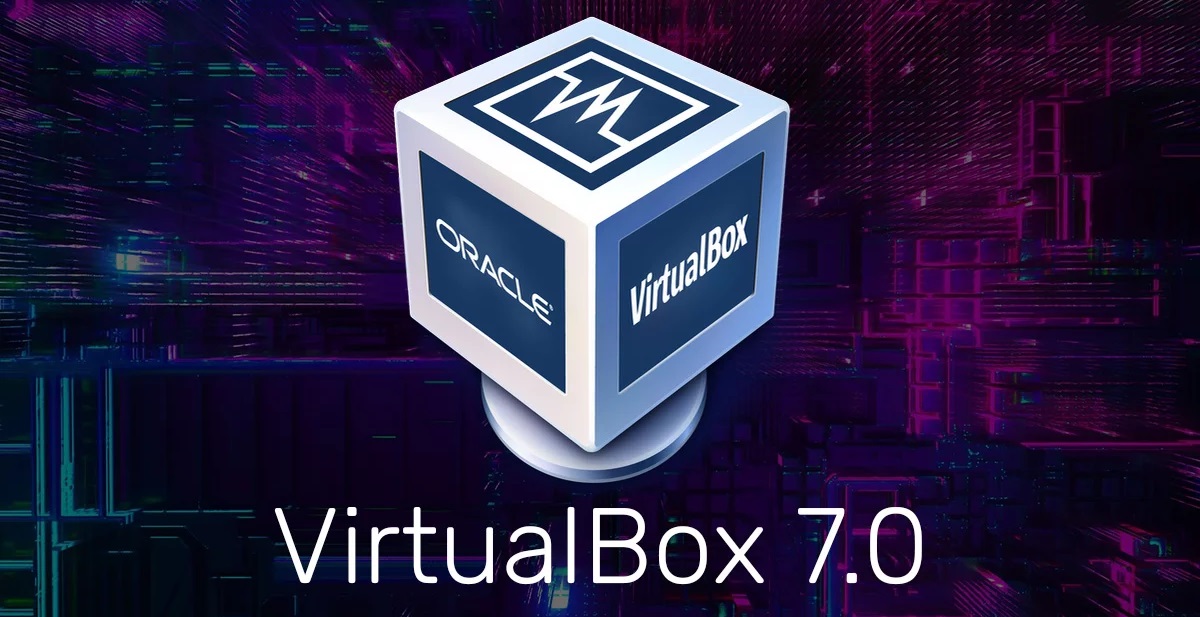
VM VirtualBox is virtualization software for x86/amd64 architectures
The release of the new version of VirtualBox 7.0.14, version in which Oracle reports that it has about 14 fixes and along with which also released an update to the previous branch of VirtualBox 6.1.50 with 7 changes, including support for packages in RHEL 9.4 and 8.9, as well as the implementation of the ability to import and export VM images with NVMe drive controllers, among other things.
For those who are unaware of VirtualBox, I can tell you that this is a cross-platform virtualization tool, which gives us the possibility of creating virtual drives where we can install an operating system within the one we normally use.
Main new features of VirtualBox 7.0.14
In this new corrective version that is presented of VirtualBox 7.0.14 3D support has been significantly improved, Besides that It is now possible to import and export virtual machine images in OVF format that contain NVMe drive drivers and has added the ability to export images that include media inserted into a virtual CD/DVD drive linked to a Virtio-SCSI controller.
Another change that stands out is aimed at Linux users, as support for the kernel packages included with RHEL 9.4 has been integrated, ensuring continued compatibility with RHEL.
In the case of Solaris Guest Additions now allows installation of add-ons in an alternative root directory ('pkgadd -R'), providing flexibility in resource management. Additionally, uninstallation of Solaris Guest Additions has been optimized, eliminating the need to restart the virtual machine.
On hosts Windows, issues related to switching audio devices when using the WAS audio backend have been addressed, ensuring a smooth transition, while for Windows guest systems, fixed an issue where touch screen events They were lost during prolonged touches without movement, improving accuracy and response.
On macOS hosts, we added support for new storage devices and fixed a memory leak in the VBoxIntNetSwitch process when configuring the virtual machine to use the internal network.
On the part of the changes implemented in VirtualBox 6.1.50, the following are mentioned:
- Fixed detection of VT-x used by other hypervisors
- Added support for importing and exporting virtual machines with NVMe storage controllers
- Added support for exporting a virtual machine containing media inserted into a virtual CD/DVD drive connected to a Virtio SCSI controller.
macOS Host USB: Added support for newer storage devices - Added initial support for RHEL 9.4 kernel
- Solution for Kernel Panic in RHEL 8.9 kernel caused by vboxvideo
- Correction of identifier number used for OEM DMI table
If you are interested in knowing more about it about the release of this version, you can consult the details in the following link.
How to install VirtualBox 7.0.14 on Ubuntu and derivatives?
For those who are already VirtualBox users and they have not yet updated to the new version, they should know that they can only update by opening a terminal and typing the following command in it:
sudo apt update sudo apt upgrade
Now for those who are not yet users, you should know that before installing, they need to ensure that hardware virtualization is enabled. If they are using an Intel processor, they must enable VT-x or VT-d from their computer's BIOS.
In the case of Ubuntu and derivatives, we have two methods to install the application or, where appropriate, update to the new version.
The first method is by downloading the "deb" package offered from the official website of the application. The link is this.
The other method is adding the repository to the system. To add the official VirtualBox package repository, they should open a terminal with Ctrl + Alt + T and run the following command:
echo "deb https://download.virtualbox.org/virtualbox/debian $(lsb_release -cs) contrib" | sudo tee /etc/apt/sources.list.d/virtualbox.list
Done this now We must add the public PGP key from the official VirtualBox packages repository to the system.
Otherwise, we will not be able to use the official VirtualBox package repository. To add the public PGP key from the official VirtualBox package repository, run the following command:
wget -q https://www.virtualbox.org/download/oracle_vbox_2016.asc -O- | sudo apt-key add -
We must update the APT package repository with the following command:
sudo apt-get update
Once this is done, now we are going to proceed to install VirtualBox to the system with:
sudo apt install virtualbox-7.0
And ready with it, we can use the new version of VirtualBox in our system.